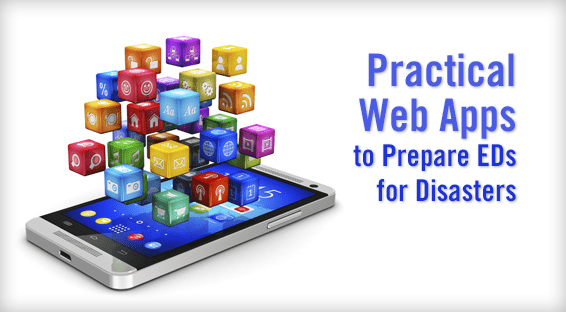To help EDs prepare for major disasters, scientists at Johns Hopkins University’s National Center for the Study of Preparedness and Catastrophic Event Response (PACER) have developed several web-based digital applications. These apps offer advanced research, training, and educational programs to address needs for planning and responding to these events.
“It’s important to be able to handle different kinds of disasters, regardless of how big or small they may be,” says James Scheulen, PA, MBA, who is a PACER researcher. “The key is to have reliable, practical tools that are readily available. Such resources can help emergency planners, emergency preparedness departments, hospital leadership, and first responders respond quickly and efficiently.”
EMCAPS 2.0
One of the new digital apps developed by PACER is an update to the Electronic Mass Casualty Assessment and Planning Scenarios program (EMCAPS 2.0). Developed by Scheulen and his team of researchers, EMCAPS 2.0 offers an improved, easy-to-use interface that allows users to estimate the number and type of casualties that could result from 11 different likely or potential disasters identified by the Department of Homeland Security. Scenarios that can be modeled in EMCAPS 2.0 include anthrax, improvised explosive devices, open-air explosions, food contaminations, blister agents (eg, mustard gas), nerve agents (eg, sarin), toxic gas releases, explosions on public transportation, nuclear device explosions, and pneumonic plagues and pandemics.
EMCAPS 2.0 uses hazard vulnerability analyses to inform users about training and educational strategies for emergency preparedness, according to Scheulen. “The app is free to users and provides practical information on realistic disaster scenarios,” he says. “It helps EDs prepare for the influx of patients that these personnel will likely encounter.” Scheulen notes that some of the scenarios modeled in EMCAPS 2.0 are smaller in nature—food contaminations, for example—but says these events are still important because they can dramatically affect ED volume and patient flow. Users can adjust specific variables so that planning can be adapted based on the different scenarios that occur.
Filling a Gap
Scheulen says EMCAPS 2.0 was developed to help fill some of the gaps in accessible and reliable technologies for disaster planners. “It’s challenging to anticipate the need for supplies and other resources during disasters because time is critical,” he says. “The EMCAPS 2.0 app is valuable because it can help hospitals cope with the sudden influx of patients after these events. These efforts are important to adequately manage many of the difficult medical, social, and psychological dynamics that major disasters can trigger.”




 TimH
TimH